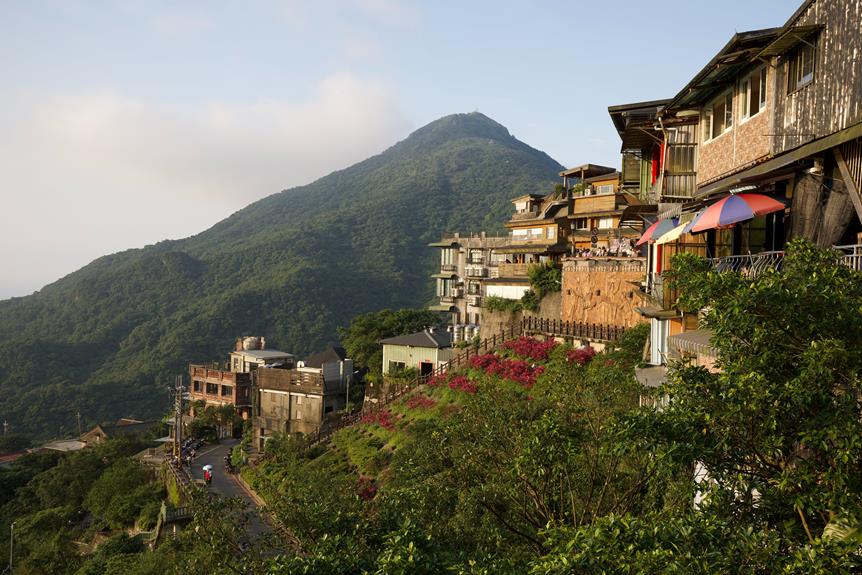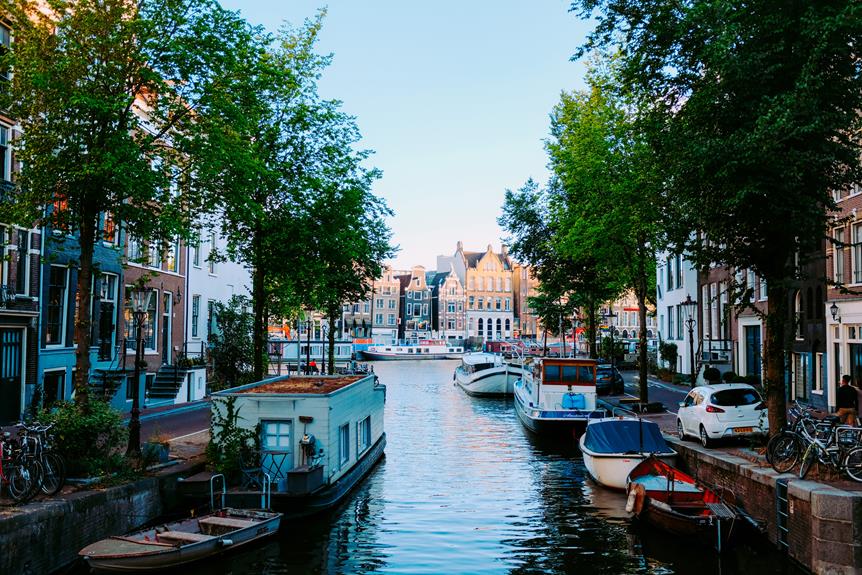Situated in the heart of Bangladesh, Madaripur District stands as a cultural gem adorned with a tapestry of rich history. From its humble beginnings as a subdivision under Bakerganj district in 1854 to its eventual elevation to district status in 1984, Madaripur has witnessed the ebb and flow of time, leaving behind a legacy that beckons exploration. With its diverse administrative areas, burgeoning population, and harmonious coexistence of religions, Madaripur District offers a captivating tale that unfolds with each passing chapter. As we embark on this journey, we will delve into the district's educational landscape, its vibrant arts and crafts scene, and its agricultural prowess that has shaped its identity over the years. Brace yourself for an immersive experience as we uncover the cultural treasures and historical heritage of Madaripur District.
History and Administrative Areas
Madaripur district, established in 1854 under Bakerganj district, has a rich history and is known for its administrative areas that have undergone significant changes over the years. The district was initially a subdivision under Bakerganj district but was later separated and annexed to Faridpur district in 1873. It finally gained the status of a district in 1984. The name of the district, Madaripur, is derived from the Sufi saint Sayed Badiuddin Ahmed Zinda Shah Madar. Madaripur district comprises 3 parliamentary seats, 5 upazilas, 5 police stations, 4 municipalities, 59 Union Parishads, 1062 villages, and 479 mouzas. This administrative structure reflects the growth and development of the district. Madaripur district's subdivisions have evolved to accommodate the changing needs and demands of the region.
Population
With a steady increase over the years, the population of Madaripur district has experienced significant growth. In 1974, the population was 807,404, and it is estimated to reach 1,293,027 by 2022. This population growth can be attributed to various factors such as improved healthcare, better living conditions, and increased economic opportunities. The district has a population density of approximately 1,149 people per square kilometer. In terms of demographic composition, the majority of the population in Madaripur district follows Islam, with 88.68% identifying as Muslims. Hinduism is the second-largest religion, with 11.21% of the population being Hindus. The remaining 0.11% either follow other religions or have not stated their religious affiliation. This diverse demographic composition adds to the cultural richness of Madaripur district.
Religion
The demographic composition of Madaripur district adds to its cultural richness, with a diverse range of religious affiliations shaping the social fabric of the region. Islam is the predominant religion in Madaripur, with 88.68% of the population being Muslims. Hinduism is the second-largest religion, with 11.21% of the population being Hindus. There is also a Christian minority in the district. This religious diversity fosters a sense of unity and encourages interfaith dialogue, allowing people of different faiths to come together and celebrate their shared values. Madaripur district serves as a shining example of peaceful coexistence and religious tolerance, where individuals from different religious backgrounds live harmoniously. The district's commitment to interfaith dialogue promotes understanding, respect, and cooperation among its residents, contributing to the overall cultural richness of Madaripur.
Education
The educational landscape of Madaripur district showcases a diverse range of institutions dedicated to nurturing the intellectual growth and development of its residents. Here are three key aspects of education in Madaripur:
- Educational Institutions: Madaripur district boasts a total of 213 educational institutions, providing ample opportunities for students to pursue their academic goals. These institutions include schools, colleges, and universities, offering a wide array of courses and programs to cater to the diverse interests and aspirations of the students.
- College Facilities: Among the educational institutions in Madaripur, there are 21 colleges, including 3 government colleges. These colleges offer a conducive learning environment with well-equipped classrooms, libraries, laboratories, and other modern amenities. Students have access to experienced faculty members who are committed to imparting quality education and shaping the future leaders of the district.
- Academic Excellence: Madaripur district takes pride in its renowned colleges, such as Boheratola Mohila College, Borhamganj Government College, Government Sufia Mohila College, Madaripur Govt College, and Nurul Amin University College. These institutions have a track record of academic excellence and have produced graduates who have excelled in various fields, contributing to the progress and development of both the district and the nation.
The educational landscape of Madaripur district is a testament to its commitment to providing quality education and nurturing the intellectual potential of its residents. Through its diverse educational institutions and well-equipped college facilities, Madaripur is paving the way for a brighter future for its students.
Arts and Crafts
Madaripur district showcases a vibrant and diverse array of traditional arts and crafts, reflecting its rich cultural heritage and artistic traditions. The district is home to a community of skilled and talented artisans who have preserved and practiced these traditional techniques for generations. These local artisans utilize their expertise to create exquisite handicrafts that are unique to Madaripur. One such craft is the art of weaving, where intricate patterns and designs are woven into fabric using traditional looms. Another notable craft is pottery, where clay is shaped into beautiful vessels and decorative items. Wood carving is also a prominent art form, with skilled craftsmen creating intricate designs on furniture and decorative pieces. These arts and crafts not only serve as a source of income for the local artisans but also contribute to the cultural identity and heritage of Madaripur district.
Agricultural Production
With its rich cultural heritage and artistic traditions, Madaripur district not only showcases a vibrant array of traditional arts and crafts but also boasts a thriving agricultural sector. The district's agricultural production plays a significant role in the local economy and sustains the livelihoods of many residents. Here are three key aspects of agricultural production in Madaripur:
- Jute cultivation: Madaripur is renowned for its jute cultivation, which contributes significantly to the country's jute industry. The fertile soil and favorable climate make it an ideal region for growing high-quality jute fibers. Jute is not only an essential cash crop but also a significant source of employment for the local population.
- Rice production: Rice is the staple food of Bangladesh, and Madaripur district plays a crucial role in its production. The district's fertile lands and extensive irrigation systems enable the cultivation of various rice varieties. The farmers employ traditional methods as well as modern techniques to maximize yields and meet the demands of both local consumption and export.
- Agricultural innovation: Madaripur district has embraced agricultural innovation to enhance productivity and sustainability. Farmers are adopting modern farming practices, such as the use of improved seeds, organic fertilizers, and efficient irrigation techniques. Additionally, the government and various organizations provide training and support to farmers, empowering them with the knowledge and resources to improve their agricultural practices.
Through jute cultivation, rice production, and agricultural innovation, Madaripur district continues to contribute significantly to the agricultural sector of Bangladesh, ensuring food security and economic prosperity for its residents.
Cultural and Historical Heritage
Steeped in a rich cultural tapestry and steeped in historical significance, Madaripur district stands as a testament to the region's vibrant heritage. The district is known for its cultural festivals that showcase the traditions and customs of the local communities. These festivals, such as the Madaripur Mela and the Baira Mela, are eagerly awaited events that attract visitors from far and wide. Madaripur is also famous for its traditional crafts and artisans who have honed their skills over generations. The district is home to skilled craftsmen who specialize in pottery, weaving, woodwork, and metalwork. These artisans create exquisite pieces of art that reflect the cultural heritage of the region. The preservation and promotion of these traditional crafts contribute to the district's cultural identity and provide livelihood opportunities for the local community. Madaripur's cultural festivals and traditional crafts are a testament to the district's rich cultural and historical heritage.
Frequently Asked Questions
What Is the Main Occupation of the People in Madaripur District?
The main occupation of the people in Madaripur district is primarily agriculture. The district is known for its agricultural production, particularly in the cultivation of jute and rice. Traditional occupations such as farming and fishing have been an integral part of the local economy. However, with economic development and the diversification of industries, there has been a shift towards other sectors such as manufacturing and service industries. Nonetheless, agriculture still remains a significant source of livelihood for the majority of the population in Madaripur district.
Are There Any Notable Landmarks or Historical Sites in Madaripur District?
Notable landmarks and historical sites are abundant in Madaripur district, making it a treasure trove for cultural enthusiasts. From the majestic Madaripur Rajbari, a grand palace showcasing exquisite architectural beauty, to the serene Madaripur Shahi Masjid, a historical mosque with intricate designs, the district offers a glimpse into its rich past. Other notable sites include the Nawab Bari, a residence of the influential Nawabs, and the Khoajpur Zamindar Bari, a sprawling estate steeped in history. Exploring these landmarks is like stepping back in time and experiencing the cultural heritage of Madaripur.
How Many Primary Schools Are There in Madaripur District?
There are a significant number of primary schools in Madaripur district, contributing to its strong education infrastructure. The district is known for its education initiatives, which have resulted in the establishment of numerous educational institutions. These primary schools play a crucial role in providing primary level education to the young population of Madaripur. With a focus on quality education, these schools ensure that children have access to the necessary foundation for their academic journey.
What Are the Main Festivals Celebrated in Madaripur District?
The main festivals celebrated in Madaripur district showcase its cultural diversity and vibrant traditions. People in Madaripur enthusiastically observe festivals such as Eid-ul-Fitr, Eid-ul-Adha, Muharram, and Durga Puja. These festivals bring the community together and provide an opportunity to showcase their traditional cuisine, which includes delicacies like pitha, shorshe ilish, and khichuri. The festivities and culinary delights of Madaripur district reflect the rich cultural heritage and vibrant spirit of its people.
What Is the Literacy Rate in Madaripur District?
The literacy rate in Madaripur district is a key indicator of educational development in the region. With a total of 213 educational institutions, including 21 colleges, the district has made significant strides in promoting education. The literacy rate reflects the percentage of individuals aged 7 years and above who can read and write. While specific data on the literacy rate in Madaripur district is not mentioned, it is crucial to acknowledge the district's commitment to providing educational opportunities to its residents.





